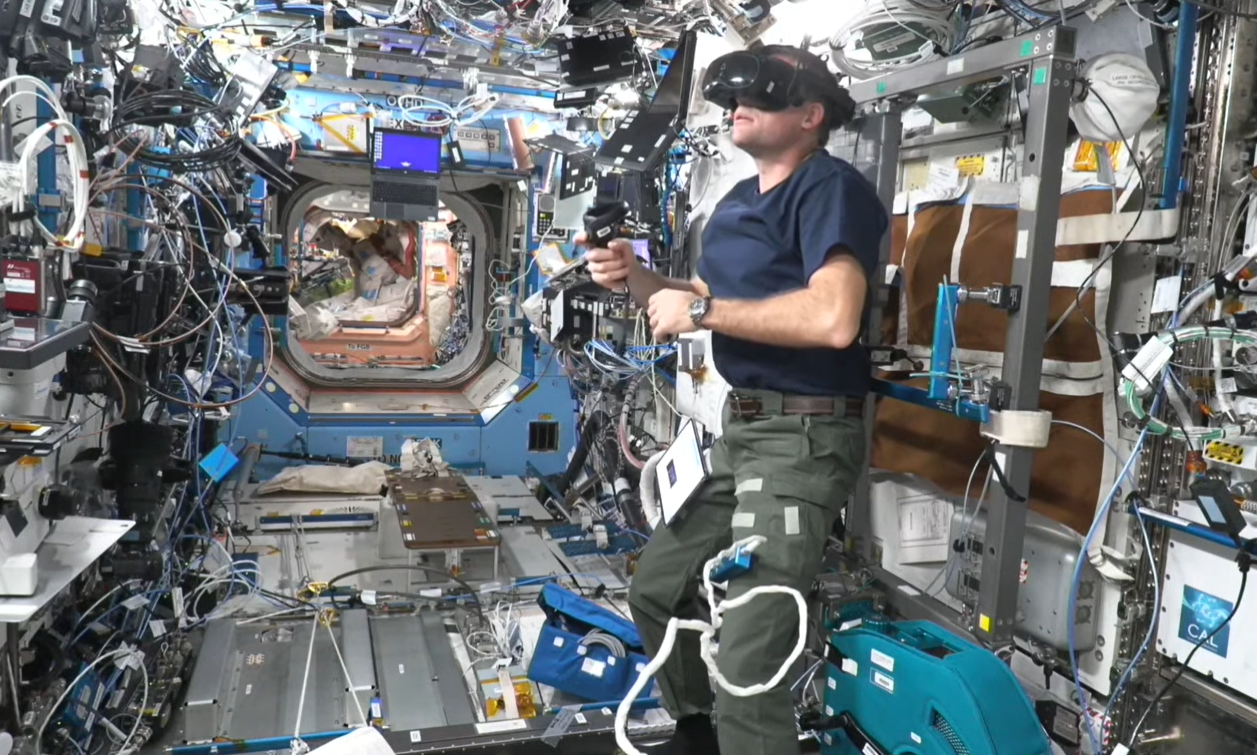Follow us on Google News (click on ☆)

Space missions subject crews to a significant set of psychological constraints: isolation, a lack of variety in environmental stimuli, and increased stress. To mitigate these challenges, the Vive Focus 3 headset, specifically adapted for space conditions, represents a tool aimed at improving stress management and preventing issues related to prolonged isolation.
Andreas Mogensen, an astronaut on the NASA Crew-7 mission, was the first to benefit from this technology, utilizing the headset for mental relaxation sessions.
On February 15, 2024, it was announced that the use of the Vive Focus 3 would extend beyond supporting mental health to also include physical exercises. With this extension, astronauts' physical training routines are now enhanced by immersive visual and interactive experiences. By pairing the VR headset with an exercise bike, astronauts can simulate cycling routes through various landscapes.
VR thus plays a role in the quest to improve both physical and mental health of the astronauts. By recreating natural environments and providing auditory and visual stimuli, the headset allows for a connection to Earth, helping to overcome the isolation of space.